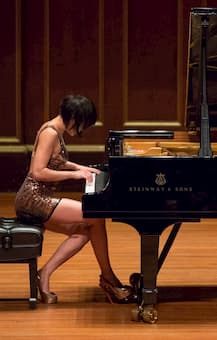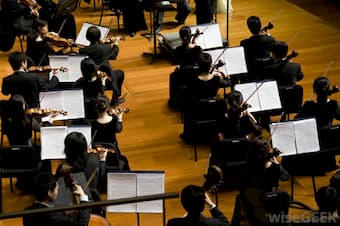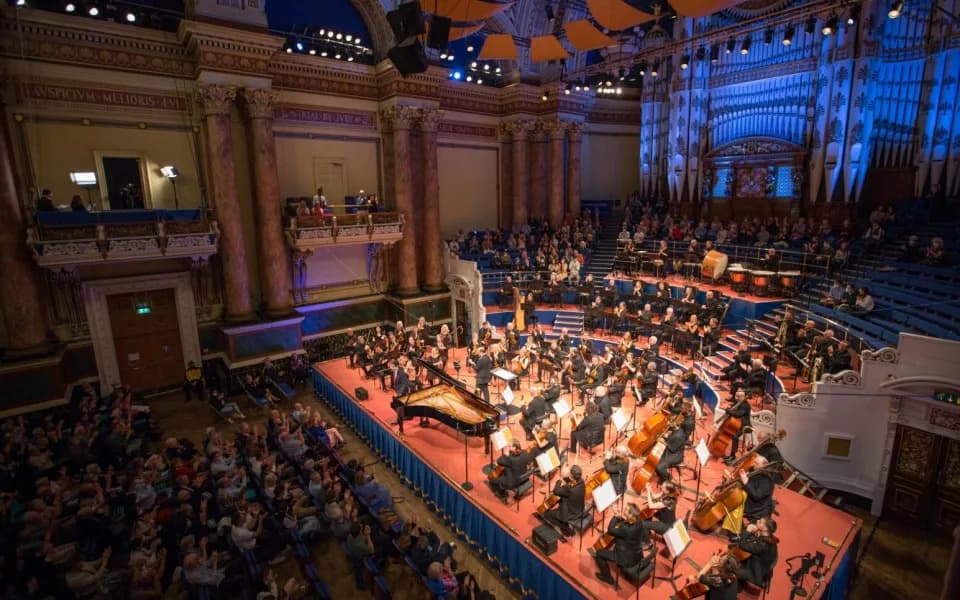
© Fotolia
A while ago, I read an interesting story about the evolution of the performance dress code for musicians. It stated that the tradition of black-tie formal wear in classical music harks back to the Victorian era, where manservants and butlers wore similar attire – that is, the musicians were dressed as the ‘help’.
Interesting, because it serves to showcase the social role musicians played in that bygone era. But whilst the manservant has mostly gone the way of the dinosaur, musicians have seemingly held strong to this concept and its accompanying perception.
This article however is not about what a musician chooses to wear or not – the strength of that argument goes out the window the moment one moves past the male gender. Instead, it’s about the overarching mentality that holds musicians’ hostage in almost every respect of our industry.
But back to the ubiquitous dress code: how we dress is how we wish to be perceived. Classical music attire is almost always formal – from black-tie for men, to elegant evening gowns for women. The fact that most of the dialogue surrounding Yuja Wang and James Rhodes revolves around their choice of clothing is proof that any diversion from the norm is seen as an affront to what we as musicians should be representing.
And what is it that we’re representing? A long performance tradition, of course. One that just happens to have its roots in class servility.

Most of the dialogue surrounding Yuja Wang revolves around her choice of clothing © Robert Torres
Whilst we may represent to the wider public a symbol of cultural and financial elitism, we ourselves as musicians are rarely welcomed into this class. If indeed elitism is the cornerstone of the traditional classical music industry, then we are merely the facilitators and servants of it, as opposed to the purveyors and originators. Only the very top level of artists eventually manages any form of equity with our patrons, and even then, never really at the same level.
Our servility manifests itself in every aspect of our daily experience, and it pervades our mentality on many levels. Our existence is a non-stop cycle of paying homage and tribute to ‘composer intentions’ and ‘playing it right.’ Our individual personalities are broken down in music schools, where we are systematically encouraged to put our musical desires to one side and disregard our natural intentions, in preference for examples set by anecdotal evidence and recordings. We are specifically taught that what we want to do is not valuable – only tradition, and only faithful reproduction of the text.
In this system, we are not artists: we are well-trained copyists. We are servile to the ‘good word’ of the page, we adhere to stylistic rules and regulations in an attempt to recapture performance standards of previous eras – without ever questioning why, or where the legitimacy of these rules originated. If we do stray from the page and offer something of ourselves, it is met with nothing but hyperbolic outrage, mirth, and disgust from our peers and from our audiences. We are servants playing to our masters, and we have a responsibility first to entertain them, and specifically not to outrage them. We don’t even get to really choose our programmes – that’s left to the administrators who again make decisions based on audience purchasing power.
Popular musicians across all genres have their dress codes also – but since the late 1960s they have chosen to represent something else: desire. They dress in a style that evokes both primal desire (Robert Plant’s skinny jeans, anyone?) and the desire from the audience to be that person. They celebrate the uniqueness and boldness of the individual through creating a persona, and image that is above and beyond the ‘normal’ human existence. The audience wants to be, or be with the person on stage. With all due respect, I highly doubt the majority of the traditional classical music audience harbour a lustful desire to be the second bassoonist in an orchestral pit.

Members of an orchestra usually wear formal, black clothing © Wisegeek
We need to claim our independence as musicians and move from generic respect, to genuine awe. If our ancestors operated in social and economic scenarios which required their servility (which historically was the case – see Bach the church cantor, Mozart and Haydn under the aristocracy, Chopin hired by the bourgeoise elite), then there is no reason we must fill the same role.
As a collective, we need to decide what we wish to represent – a museum of tradition, or an evolving cultural life-form. Great art will never be the result of pandering to the masses, or subjugating individual expression for the goal of ‘getting it right’. If modern music-making is uninspiring, it is because our ability to say anything of interest has been stifled by generations of conservative thinkers who value objective perfection over subjective communication. Reclaim your right to wear what and play how you want, with your intentions and the quality of the music as the highest goal. Maybe then for the first time, we can escape the doldrums of servility and emerge with artistic credibility.
For more of the best in classical music, sign up to our E-Newsletter




You attend a concert for the music not the fashion show. Nothing wrong with tradition and having the musicians blend in to the background to showcase the music.
Thank you for raising this subject. Writing personally as a professional conductor, I would always choose to wear white tie for a evening concert and equivalent formal daywear for an afternoon performance, unless it were a specifically informal event, for example for children. Historically most of the concert audience would normally have been wearing evening dress too, therefore the musicians’ clothes were no different from those of the audience. Rather than appearing as servants, they were dressing as equals. Today, in times when formal evening wear is worn by fewer people and in more rare circumstances, it may seem odd for musicians to make such an effort disproportionate to their audience. However to me, making the effort to wear formal clothes, although without distracting ornaments, reflects how much I love and care about what I do, and what want to offer to my colleagues and the audience. It feels like a symbol of respect for what I am doing, and for those around me. I hope this would not make anyone feel alienated – on the contrary, for them to understand they are coming to what I hope is a special event for them and for me, outside of day-to-day life.
I realise others will have different views and I am relaxed about this too. Ultimately the quality of the music-making and the sincerity of how it is offered is what matters most.
While I am aware that each patron of a Symphony concert can wear what he/she wishes, I believe it would do the audiences of concerts of this nature a lot of good to dress in suits and/or tuxedos when attending. I had a music teacher in college who always encouraged us to go to concerts and if we had tuxedos to wear them. He basically told us that showing up in jeans, t-shirts and backward hats etc. just wasn’t showing respect to the orchestra (even a student ensemble) and all the work that they had put into the concert. I had no problem with that, but now being a subscriber to my city’s orchestra concerts, I am amazed at what some people will show up wearing. Yes, getting dressed up is work, but it’s such a pleasure seeing some people look very classy. What will happen now that things are open again? I don’t know, but as for me I will continue to dress in a tuxedo, plop myself in a seat for a year of concerts and enjoy it immensely. And yes, this includes a bow tie and cummerbund as well as a starched tuxedo dress shirt too. I know my orchestra members will thank me for dressing as well as they do.
Cummerbund? Ugh. Alful. A waistcoat is much nicer.
Happy Mondays dressed well. They wore street clothes and didn’t look like fruitcakes. What’s bad isn’t suits and ties it’s the too small everything and the gd medium haircuts you see musicians rocking. Its the male musicians who always look ridiculous.